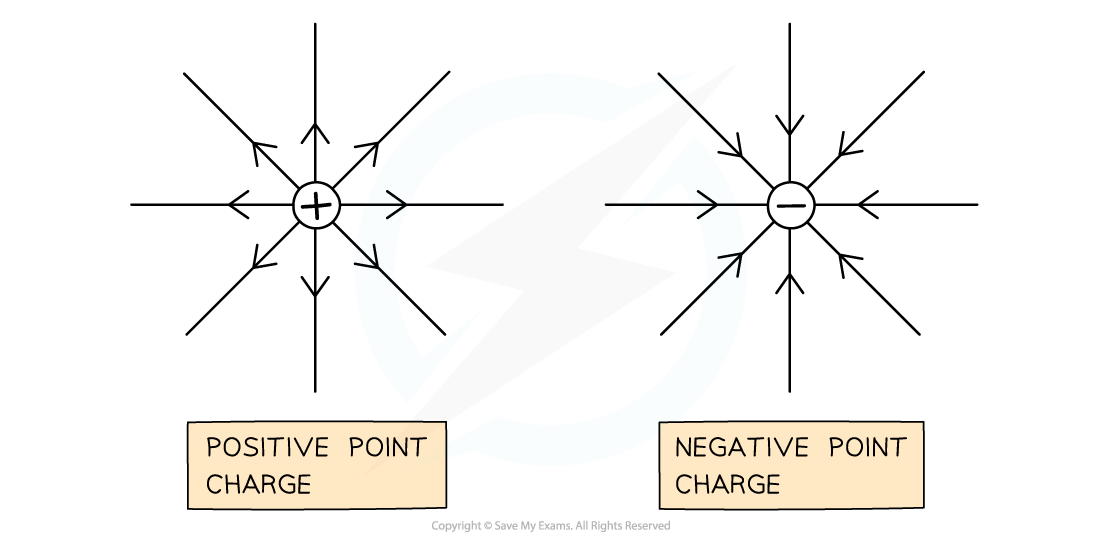Electric Field due to a Point Charge (Edexcel A Level Physics): Revision Note
Electric Field due to a Point Charge
The electric field strength describes how strong or weak an electric field is at that point
A point charge produces a radial field
A charge sphere also acts like a point charge
The electric field strength E at a distance r due to a point charge Q in free space is defined by:

Where:
Q = the point charge producing the radial electric field (C)
r = distance from the centre of the charge (m)
ε0 = permittivity of free space (F m-1)
This equation shows:
Electric field strength in a radial field is not constant
As the distance from the charge r increases, E decreases by a factor of 1/r2
This is an inverse square law relationship with distance
This means the field strength E decreases by a factor of four when the distance r is doubled
Note: this equation is only for the field strength around a point charge since it produces a radial field

Positive and negative point charges and the direction of the electric field lines
The electric field strength is a vector Its direction is the same as the electric field lines
If the charge is negative, the E field strength is negative and points towards the centre of the charge
If the charge is positive, the E field strength is positive and points away from the centre of the charge
This equation is analogous to the gravitational field strength around a point mass
The only difference is, gravitational field lines are always towards the mass, whilst electric field lines can be towards or away from the point charge
The graph of E against r for a charge is:

The electric field strength E has a 1/r2 relationship
The key features of this graph are:
The values for E are all positive
As r increases, E against r follows a 1/r2 relation (inverse square law)
The area under this graph is the change in electric potential ΔV
The graph has a steep decline as r increases
Worked Example
Calculate the strength of the electric field at a distance of 2 m away from an electron, and state its direction.
Answer:
Step 1: Write out the equation for electric field strength

Step 2: Substitute quantities for charge, distance and permittivity of free space
The charge on an electron Q = –1.6 × 10–19 C
The distance r = 2 m
Permittivity of free space ε0 = 8.85 × 10–12
Therefore:
E = = –3.6 × 10–10 N C–1
Step 3: State the direction of the field
The negative sign indicates the electric field is directed towards the electron
Examiner Tips and Tricks
Remember to square the distance in the electric field strength equation! Don't get this mixed up with the electric force between two charges equation, which has two charges (Q) in the equation, whilst the equation for E only has 1 Q, which is the one producing the electric field

You've read 0 of your 5 free revision notes this week
Sign up now. It’s free!
Did this page help you?
